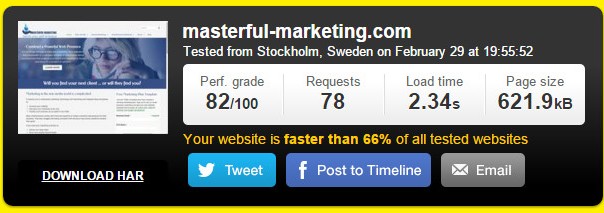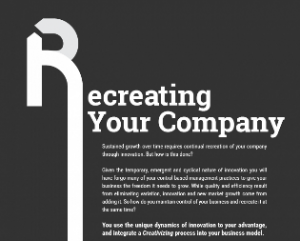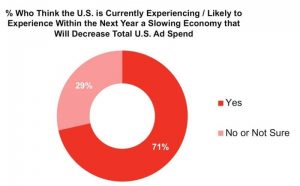
WordPress powers 25 percent of all websites. Small businesses, whether they blog or not, are taking advantage of the simplicity and power of this content management platform. WordPress allows you to take control of your website, making it easy to keep it updated with fresh, relevant content. But all that great content is useless if it can’t be readily found by those searching. To optimize WordPress effectively, you need to pay attention to both content and website performance.
Contrary to public opinion, WordPress is not search engine optimized out of the box but is search engine friendly. With a little knowledge of how to optimize your content and increase your website speed, you can provide a better user experience for your visitors and increase your chances of ranking higher in the search engines.
Invest in Search Engine Optimization
Remember that inbound marketing is a combination of search, social and content marketing working together to drive your ideal clients to you. If you believe marketing is an investment in your business, then you should be investing in search engine optimization regularly to ensure you stay visible.
The challenge is that SEO advice that you got a couple years ago may no longer be valid. Following the best practices of (March 06, 2016) could get you penalized today. There are many SEO myths that continue to thrive, hurting the efforts of many content marketers. Just remember that there are no guarantees that anyone can get you top Google rankings for your content.
Let’s take a closer look at where you need to focus to optimize WordPress and gain better visibility in search engine results.
Optimize your content
Focus your content on a single topic
Without content, your website will not rank very well. Writing a page or post around a specific topic helps both the visitor and the search engine. Organizing your website content is crucial to ranking well. The better it flows and cross links to other content on your site, the more likely both the human and the search engine will more easily find what it is looking for.
- Create a content strategy that identifies how you want the content to flow through your website
- Break the content into topics based on the top keyword phrases you want your website to rank. These keywords should align with the strengths of your business.
- Create high quality pages for those keywords and link them to blog posts that go into more detail. This allows you to optimize each post or page for that one topic and deep link into your website to help visitors and search engines navigate to additional, relevant content.
Tip: Focusing not only helps with SEO but also with your writing.
Install a high-quality SEO plugin
Yoast SEO or All-in-One SEO Pack are quality SEO plugins that help you optimize your content. Use them to craft SEO titles and descriptions for your pages and posts, which are still relevant and help search engines understand the context of the page. Search engines consider each page independently and will index the page based on the content it finds only on that page.
Tip: The title and meta description are used for the search engine results snippet so a quality title and a powerful description helps not only the search engine, but also can encourage the visitor to click on the link.
Optimize images for SEO and performance
- Renaming the images using the keyword phrase as the file name
- Add the keyword phrases to the title and alt tags.
The best time to optimize images for performance is before you upload them to WordPress. Save your images for the web to reduce the size of the image. Install the WP Smush.it plugin to optimize images as you upload them.
Tip: Re-size your images to 12 inches (864 pixels) by 9 inches (648 pixels) at 72 dpi. The size is big enough visually but loads quickly.
Adhere to natural anchor text distribution
One common SEO mistake is not diversifying anchor text for links. Changes in Google’s Penguin algorithm has called for more natural anchor text distribution, encouraging you to eliminate using the same keywords in anchor text over and over. This practice can appear as over-optimization which can get you penalized.
Natural anchor text distribution means varying your anchor text using:
- Natural – flows smoothly with the rest of the content and may contain keyword phrases
- Branded – uses a brand name or brand URL as anchor text
- Generic phrases – such as “click here” or “learn more” for links
Tip: Write your content first then link phrases within your content. As anchor text, those phrases will be more natural.
Optimize your website
Ensure your website is mobile friendly
Proper support of mobile devices is now one of Google’s top ranking factors. Factors such as small fonts and closely aligned touch targets may result in your website being rated non-mobile friendly. Google is encouraging a better mobile experience and as such, may boost your ranking if your site is built with mobile devices in mind.
Tip: Opt for a mobile responsive website. You will only need to create and update content once. Plus Google likes responsive because the same URL is indexed for both desktop and mobile devices.
Redirect old URLs to new
If you had a website and converted it to WordPress, install the Redirection plugin and map all your old URLs to your new WordPress permalinks. Not doing this will mean you lose any page rank that you may have from the old site and result in many 404 pages, signalling Google that there is a potential problem with your site. Make sure you have a useful 404 page that directs visitors to your resources in the event someone does stumble across an old link to your site.
Tip: Check Google’s Search Console for broken links and map the old URL to the new page or post on your website.
Simplify URL structure
The best URL structure for people and search engines is http://domain.com/page-title-as-the-link. The default setting is http://yourdomain.com/?p=123. If you leave your permalinks set this way, you lose all the value of those keywords that you used in the title of your post or page. Instead, select the custom option and set the format to /%postname%/ or /%category%/%postname%/. Add the category only if you have been strategic with naming your categories using your main keywords.
Tip: Use just the post name and make sure you use keywords in their titles.
Set privacy to allow search engines to index the site
Go to “Settings/Reading” in your WordPress dashboard and make sure the box “Discourage search engines from indexing this site” is unchecked. Otherwise, your site won’t get indexed. Also, make sure your robots.txt file isn’t set to block the search engine bots.
Verify your site in Google and Bing
The search engines give you a way to verify site ownership so you can gather useful information. On Google, you use Google Search Console (formerly Webmaster Tools). On Bing, you use the Bing Webmaster Center (which combines traffic data from Bing and Yahoo). Each provides various methods to verify site ownership and then upload an XML sitemap.
The value of verifying and uploading a sitemap is you get a wealth of information on your site, such as:
- Keywords used to find your site
- Incoming links to your site
- Broken links
- SEO reports
Between the two tools, there is a lot of information that is useful to figuring out how your Website appears to the search engines. Google is good for finding broken links and crawl errors. Bing has a wealth of information on keywords used to find your website and what pages were server for that keyword phrase.
Tip: If you are using Yoast SEO, you can verify both tools through the plugin and generate an XML sitemap.
Invest in website performance
Website speed is important not only to the search engines, but also to the visitor. Google wants a quality user experience for those searching for information. You may have the best content but if your website has a problem loading quickly, you will lose visitors and visibility.
Do read the post about Website Speed – Important for Inbound Marketing for details about how to test your site speed and tips to optimize WordPress performance.
The following are a few updates since that post:
- WP Rocket is a premium caching plugin that has made noticeable difference in the performance of my website. Although there are many WordPress caching plugins available, many of which are free, the complexity of setting them up may not be the best option for most users.
- A2hosting.com offers a much better shared hosting environment for most WordPress websites (my site is running on A2hosting.com). They offer an A2 Optimized WordPress hosting platform which is pre-configured for enhanced speed and improved security.
- Pingdom is another tool to measure the speed of your website that I use as well as Google PageSpeed.

Invest in your WordPress website
As the critical hub of your digital footprint, your WordPress website is too valuable to ignore. Staying up to date on the changing landscape of SEO and website performance is worth an investment. The choice you have is to either invest with your time or hire a reputable consultant who can guide you on how to optimize WordPress for both search engine visibility and performance. But in either scenario, the more you know, the better you will be.
Investing in your WordPress website can have an impact on the success of your business and should be part of your overall marketing plan.
What steps are you taking to ensure your website can be found in search engine results?
Digital & Social Articles on Business 2 Community(79)







